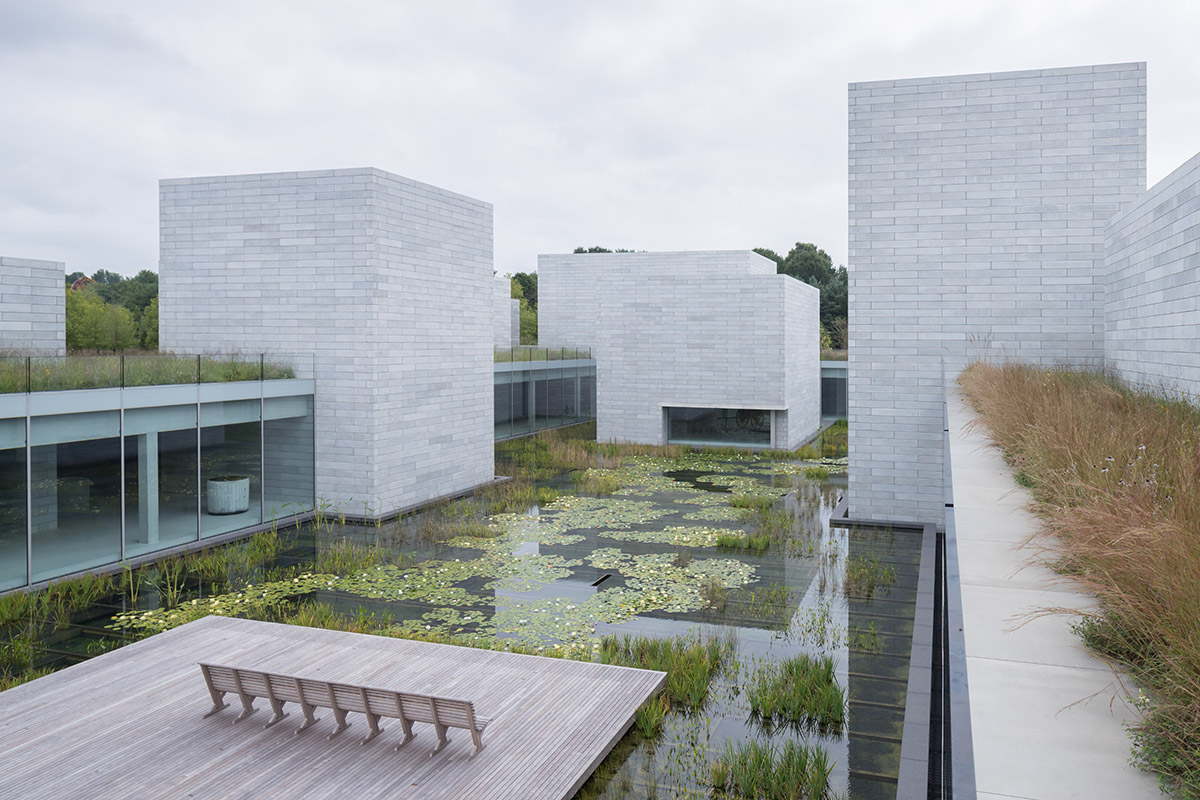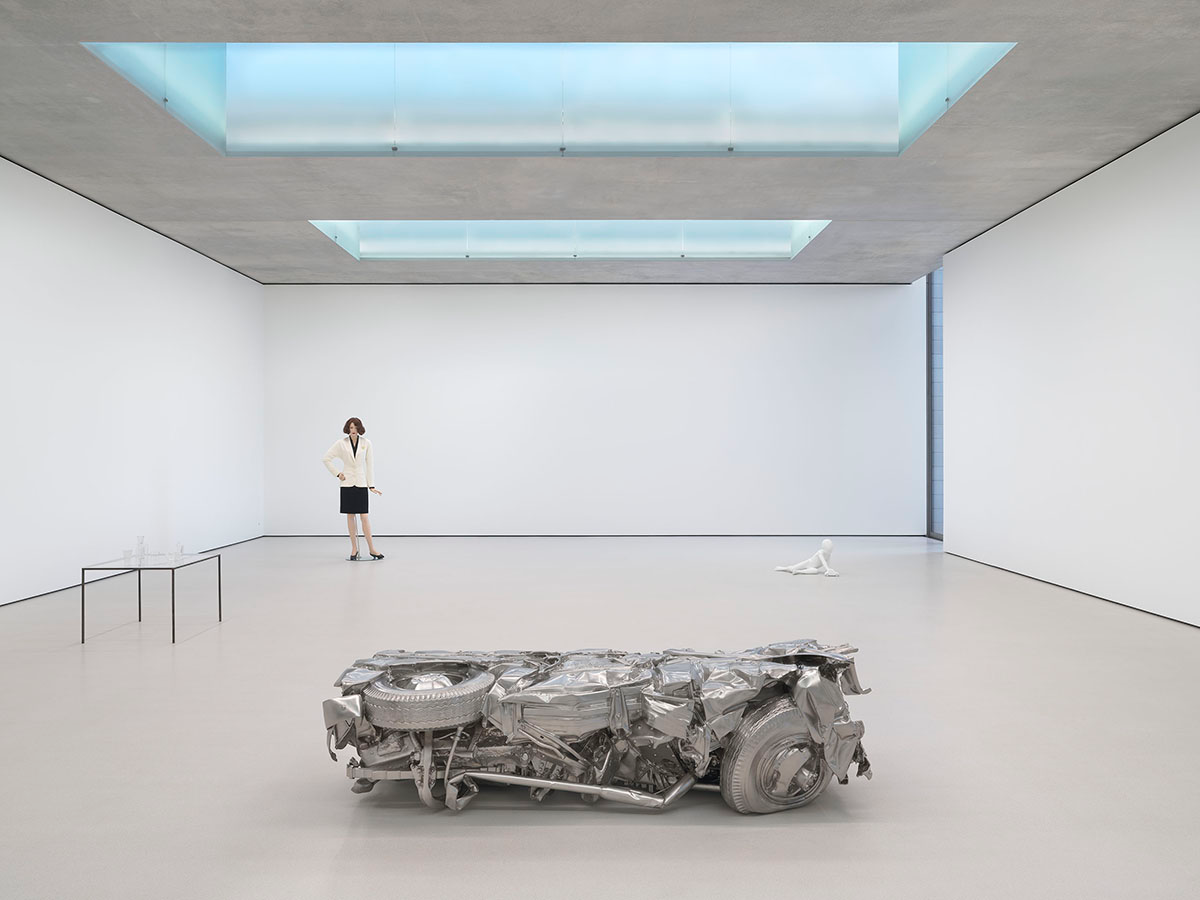Submitted by
Thomas Phifer And Partners' Glenstone Museum Takes Part Of Poetic Landscape In Maryland
teaserf-9-.jpg Architecture News - Oct 08, 2018 - 04:49 2693 views

Thomas Phifer of Thomas Phifer and Partners has completed the expansion of the Glenstone Museum in Potomac, Maryland, seamlessly taking part of a poetic landscape with its grey stone boxes.
Called the Pavilions, the museum is set to open to the public on 4 October 2018, revealing the results of a five-year expansion that has at last fully realised its founders’ vision of art, architecture, and landscape merged into a seamless experience.

Approach to the Pavilions. Image © Iwan Baan, courtesy of Glenstone Museum
Established by Emily Wei Rales and Mitchell P. Rales, Glenstone opened in 2006 and now includes a new 204,000-square-foot museum building called the Pavilions, designed by Thomas Phifer of Thomas Phifer and Partners; an additional 130 acres of rolling meadows, woodlands, and streams, designed by Adam Greenspan and Peter Walker of PWP Landscape Architecture; an Arrival Hall and bookstore; and two cafés.

Aerial of the Pavilions. Image © PWP Landscape Architecture, courtesy of Glenstone Museum
The original 30,000-square-foot museum building, called the Gallery, was designed by Charles Gwathmey of Gwathmey Siegel & Associates Architects, and opened in a 100-acre setting. With the addition of its new facilities, Glenstone now offers the public a total of 59,000 square feet of indoor exhibition space in two buildings, with all works drawn from its own renowned collection of modern and contemporary art, and 230 acres of serene, unspoiled landscape incorporating installations of major works of outdoor sculpture.

Aerial of the Pavilions. Image © Iwan Baan, courtesy of Glenstone Museum
"We’re deeply grateful to everyone who has worked with us to create Glenstone: the great artists who have given us their trust and collaboration, the magnificently talented architects and landscape architects who have been our partners, and the wonderfully dedicated professional staff who have lived this journey with us every step of the way," said Mitchell P. Rales, co-founder.
"Now we’re thrilled to welcome the people who are really the most important collaborators of all: the visitors for whom we’ve built the new Glenstone."

The Passage in the Pavilion. Image © Iwan Baan, courtesy of Glenstone Museum
The integration of architecture with landscape, and both with art, is key to the experience of Glenstone. "We considered the landscape as the inspiration," Thomas Phifer explained.
"The visitor’s arrival is choreographed through the trees and open fields, heightening your experience with the land and revealing the subtle qualities of the site. From your first moments at Glenstone you experience a place with few distractions, the bustle of ordinary daily activities drops away, and your mind and soul prepare for an intimate encounter with art."

The Passage in the Pavilions. Martin Puryear, Big Phrygian, 2010-2014 painted red cedar. 58 x 40 x 76 inches (147 x 101 x 193 cm) © Martin Puryear, Courtesy Matthew Marks Gallery. Image © Ron Amstutz, courtesy of Glenstone Museum
The Pavilions, constructed of stacked blocks of concrete inset with broad expanses of glass, is embedded into the landscape of Glenstone like a natural feature.
From the outside, the building appears to comprise a group of eleven separate masonry structures, reminiscent perhaps of an Italian hill town. Inside, visitors discover eleven distinct rooms—each with a size, proportion, and treatment of light specially suited to its purpose—connected by a glass-walled Passage ringing a lushly planted, 18,000-square-foot Water Court.

Room 2 installation, Eva Hesse, Several, 1965 and artworks by Richard Serra: White Neon Belt Piece, 1967. To Lift, 1967, and Corner Prop, 1969 © The Estate of Eva Hesse. Courtesy Hauser & Wirth; © 2018 Richard Serra / Artists Rights Society (ARS), New York. Image © Ron Amstutz, courtesy of Glenstone Museum
Works selected for the inaugural installation of the Pavilions exemplify the philosophy of Glenstone’s collection, representing key moments in the development of art since World War II, a period when our understanding of the nature of art has been continually challenged and redefined. At the time of the opening, nine rooms of the Pavilions house single-artist installations of major works or bodies of work.

Charles Ray installation (left to right):Table, 1990. Fall ’91, 1992. Baled Truck, 2014. The New Beetle, 2006. © 2018 Charles Ray. Image © Ron Amstutz, courtesy of Glenstone Museum
Admission to Glenstone will always be free, with visits scheduled on the website to ensure an unhurried and uncrowded experience for all.

The Passage in the Pavilions, Roni Horn, Water Double, v. 3 (detail), 2013-2016 solid cast glass with as-cast surfaces two units, each 50 1⁄8 inches x 53–56-inch tapered diameter (127 cm x 135–142-cm tapered diameter) © 2018 Roni Horn. Image © Ron Amstutz, courtesy of Glenstone Museum
Top image: Water Court at the Pavilions. Image © Iwan Baan, courtesy of Glenstone Museum
> via Glenstone Museum
